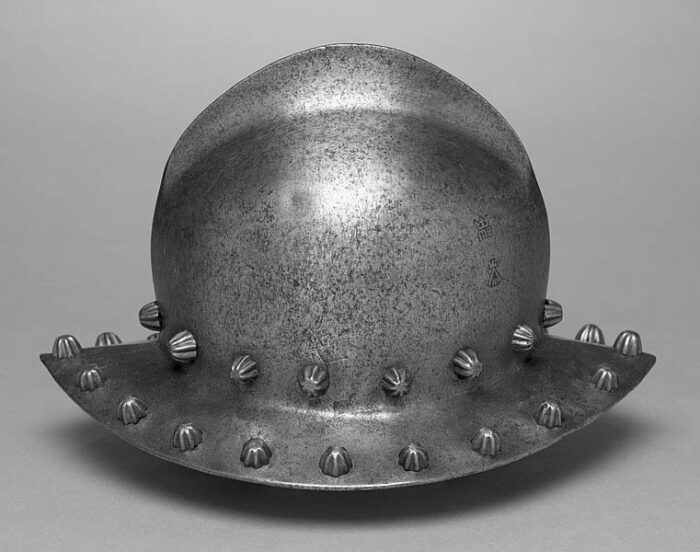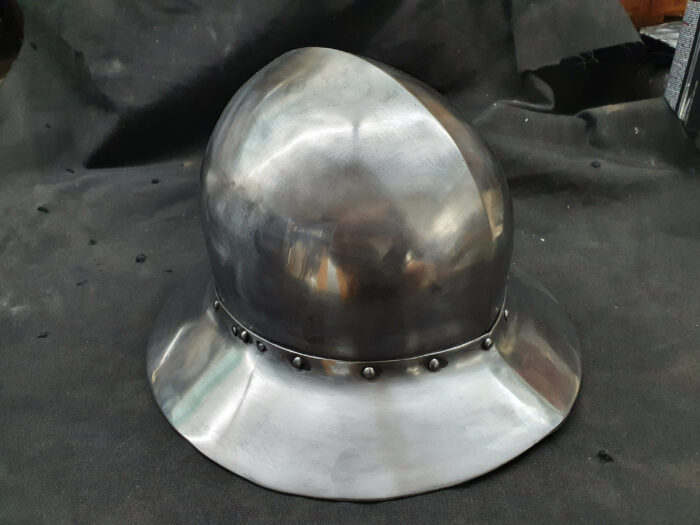This website uses cookies so that we can provide you with the best user experience possible. Cookie information is stored in your browser and performs functions such as recognising you when you return to our website and helping our team to understand which sections of the website you find most interesting and useful.

Kettle Hat Helmet
Metals: Pioneering Materials
What is a kettle hat?
A kettle hat, sometimes known as a war hat, was a type of helmet popular throughout the medieval period. This helmet design took its name from its similarity to a metal cooking pot. The kettle hat was widely used by infantry in the Hundred Years War (1337 – 1453), and was so efficient in protecting wearers from projectiles that an adapted design, the Broadie helmet, was reintroduced in both World War 1 and 2.
Kettle hat helmets were typically made from iron or steel. Their inexpensive and simple design meant they could be produced rapidly and did not require a great amount of skill to manufacture relative to other helmet types.
The wide brim of the helm provided enhanced protection against blows from above, such as cavalry swords and projectiles and held advantages over other types of helmet because it did not interfere with the wearer’s vision, hearing or breathing.

About the object
The object displayed in the Metals: Pioneering Materials exhibition is a replica kettle hat commissioned for the exhibit.
The helmet displayed is made from steel. Steel is a high-density alloy (from 7750 kg/m3 to 8050 kg/m3). This is typically 2.5 times denser than aluminium, making it much heavier. Steel is a desirable material to use for helmets because it is strong and less likely to warp, deform or bend under weight, force or heat.


